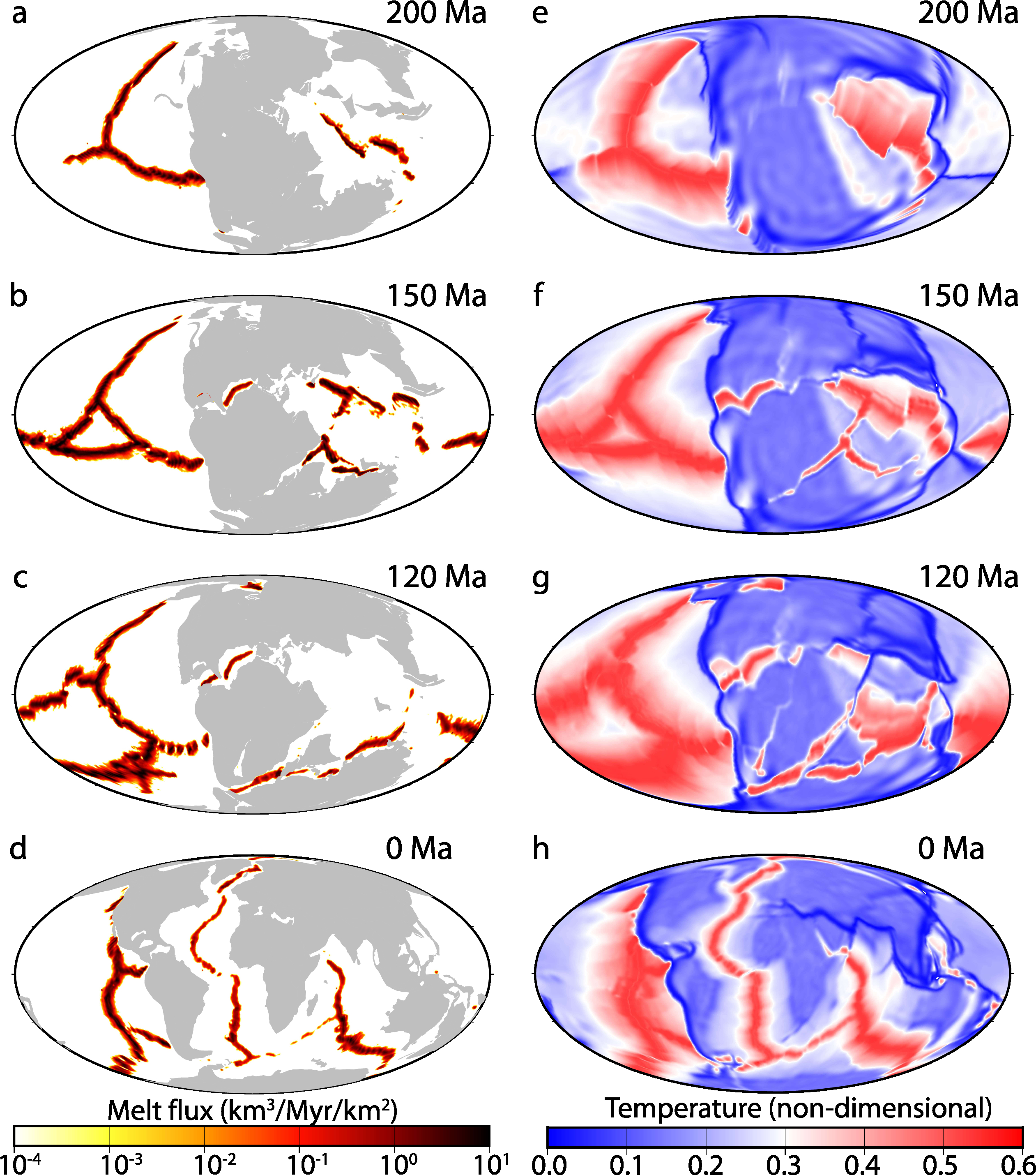
The Earth's surface and deep mantle interacts. Here, we develop methods to quantify melt production and degassing rate from global 3D mantle convection models. With this method, we build up the bridge between deep mantle convection and surface volcanism. Our results show that melt production at mid-ocean ridges is mainly controlled by surface plate motion history, and that changes in plate tectonic motion, including plate reorganizations, may lead to significant deviation of melt production from the expected scaling with seafloor production rate. We also find a good correlation between melt production and degassing rate beneath mid-ocean ridges. The calculated global melt production and CO2 degassing rate at mid-ocean ridges varies by as much as a factor of 3 over the past 200 Myr. We show that mid-ocean ridge melt production and degassing rate would be much larger in the Cretaceous, and reached maximum values at ~150-120 Ma. Our results raise the possibility that warmer climate in the Cretaceous could be due in part to high magmatic productivity and correspondingly high outgassing rates at mid-ocean ridges during that time.
